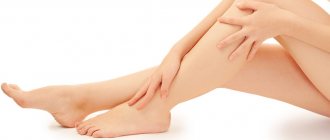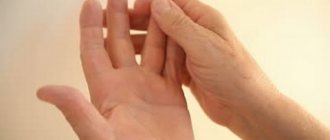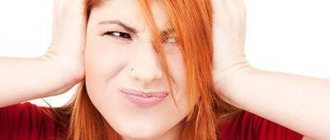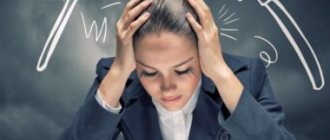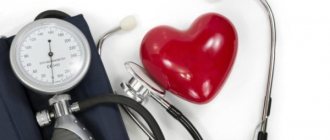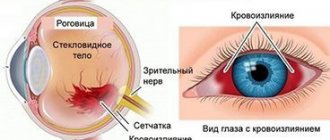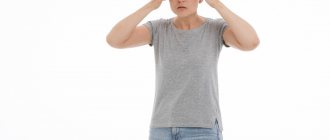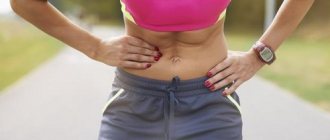Cramps are involuntary muscle contractions that cause spasms. Such manifestations occur suddenly, do not last long, and may recur periodically. They often cause severe pain, especially in the elderly and children. Most often, cramps appear in the lower extremities, thigh muscles, and calves. The neck, back, hands, and abdomen are susceptible to these painful manifestations. Spasms of internal organs are quite rare. With regular repetitions, convulsive syndrome is diagnosed.
Types of seizures
All categories of people can experience seizures, regardless of age and lifestyle; they appear more often in the elderly and young children. Attacks are manifested by unequal painful muscle contractions and have different durations, mechanisms of development and frequency of occurrence. They are classified according to several criteria.
By locality
Depending on whether one muscle or a group of them is seized by a spasm, spasms are divided into:
- unilateral – when pain occurs on one side;
- focal (local) - appear in one muscle group;
- generalized - affect the whole body, causing involuntary urination, loss of consciousness and even respiratory arrest.
By duration of exposure
Classified into:
- myoclonic - short-term contractions or twitches, mainly in the upper part of the body, stop quickly and do not cause pain;
- clonic - characterized by a longer duration, muscles contract rhythmically, can be of a local or general type, sometimes contribute to stuttering;
- tonic – long-term, can occur in any part of the body, affect the respiratory tract, the part of the body seized by a convulsion takes one forced position, can lead to loss of consciousness;
- tonic-clonic - in which tonic spasms turn into clonic; if the second type predominates, they are called clono-tonic.
Vasilenko V.V. Gallbladder. An epidemic of excesses and bends. Pain in the side / www.gastroscan.ru
| Authors: Vasilenko V.V. |
Gallbladder. Epidemic of excesses and bends
The following functions of the gallbladder are known: storage, concentration, contractile, secretory, enzymatic and regulatory.
Newborns have a spindle-shaped gallbladder. Subsequently, it takes on a pear-shaped or funnel-shaped shape. The gallbladder is attached to the lower surface of the liver. The bottom of the gallbladder is located in front, the body gradually turns into a narrow, posteriorly and upwardly facing neck, from which the cystic duct arises. In its narrow part there is a pocket in which stones can “hide”. The availability of an operation is not yet an indicator that it should be done. Lord Coe's comment
Where the neck passes into the cystic duct, the muscular layer of the wall thickens and forms a ring layer of muscles - the Lütkens sphincter (sphincter). The internal mucous membrane of the gallbladder is rich in folds and forms slit-like penetrations into the middle, muscular layer (Rokitansky-Aschoff ducts), and in the initial section of the cystic duct it forms several spiral folds that can cover a significant part of its lumen. Usually the gallbladder looks like in Fig. 1.
Rice.
1. Structure of the gallbladder Typically, the gallbladder contains up to 80 ml of concentrated bile, and to obtain such an amount of concentrate, 5–10 times more liver bile is required. When bile stagnates, its amount in the gallbladder may increase.
In women, the gallbladder in a state of functional rest has a slightly larger volume than in men, but contracts faster.
On average, 500–700 ml of bile is produced in the human body per day.
Unlike the work of other organs of the digestive system (stomach, pancreas), the formation of bile in the liver is a continuous process. However, its entry into the intestines normally occurs mainly during the digestion process. This is ensured by the reservoir function of the gallbladder and its rhythmic contractions with sequential relaxation of the mentioned Lütkens sphincter and then the sphincter of Oddi, located at the confluence of the common bile duct into the intestine.
Impaired synchronicity in the functioning of the gallbladder and valve apparatus (biliary dyskinesia) can cause episodic, recurring pain in the upper abdomen. Presumably, the pain is provoked by spasms, leading to disruption of the flow of bile and expansion (expansion) of the overlying parts of the system.
It is a paradoxical fact that problems with gallbladder emptying occur in many people with stones in the bladder, but most of them (80%) never experience such painful symptoms!
Learning without reflection is useless, but reflection without learning is also dangerous. Confucius
With every meal, the gallbladder contracts. Evacuation occurs in several alternating phases of contraction and relaxation and occurs within 15–225 minutes, depending on the volume and quality of food, as well as other factors.
High-fat foods help reduce gallbladder volume by 80%. Bile then enters the intestines, where it participates in digestion. Eating initiates about 75% of gallbladder emptyings, approximately 25% of emptyings occur during fasting, periodically, every 100–120 minutes.
Delayed bile secretion can occur due to blockage of the ducts by inflammatory products, stones, or due to compression by a tumor (in these cases, the gallbladder can reach enormous sizes, but it is painless) and with functional disorders in the form of impaired contraction of the muscles of the gallbladder and other parts of the biliary system. The motility of the biliary tract is often disrupted due to reflex effects and the complexity of regulatory mechanisms.
Teaching fools is like healing the dead. Proverb
The official classification of diseases provides for only one congenital anomaly (malformation) of the gallbladder, namely its underdevelopment or absence (agenesis, aplasia and hypoplasia of the gallbladder). In practice, other features of the anatomical structure of the gallbladder are not uncommon, which pediatricians sometimes interpret as developmental defects (Fig. 2).
Rice.
2. Congenital variants of the structure of the gallbladder Doubled and divided by a septum (septate) gallbladder. The septa are composed of fibromuscular tissue.
They can be single or multiple, more often located across the bladder, less often longitudinally, and can divide the gallbladder into separate cavities. The ultrasound method of examination (ultrasound) has become a kind of “gold standard” for assessing the condition of the abdominal organs. Thanks to ultrasound, the diagnostic search time is significantly reduced.
Since the test is physically harmless, it is often prescribed for unclear indications. Ultrasound often reveals deformation of the gallbladder and thickening of its walls, while computed tomography, as a rule, does not detect this pathology (!). Unlike computed magnetic resonance imaging, with the ultrasound method of examination the doctor is directly involved in obtaining the image, which has its pros and cons. The positive point is the possibility of a more targeted and detailed study of the object; the negative is the so-called human factor (after all, the quality of the image and its interpretation largely depend on the experience of the researcher and the correctness of the chosen methods).
As numerous studies have proven, ultrasound diagnosis of motor disorders of the gallbladder is one of the most difficult issues in clinical pediatrics, and science has not yet provided a standardized model for diagnosing dyskinesias and permanent and transient deformities of the gallbladder in practical children's healthcare. Let us recall that the bubble almost constantly changes shape, in addition, the mucous membrane forms Rokitansky-Aschoff ducts in its walls.
“Deformations” of the gallbladder in children are very common - they are diagnosed on average in 30% of children with abdominal pain, and in some (10–12%) the pain is combined. In contrast to unsubstantiated claims, serious research shows that abdominal pain due to biliary dyskinesia is equally common in children with both gallbladder deformities and those with a typical gallbladder.
Any report of kinks, folds or constrictions of the child’s gallbladder causes concern for parents. They are especially frightened by recommendations for long-term medical observation and treatment, which consists of restricting nutrition and using medications. Moreover, “defects” are often discovered by chance in children who do not complain at all about digestion. There is no need to take special treatment and preventive measures for gallbladder deformities!
Pain in the side
(Using material previously published in the publication “Oh, it hurts!” - 2004. - Special issue, No. 22.)
Diseases of the biliary system are very common. However, they rarely remain isolated for a long time: as a rule, other organs of the digestive tract are gradually involved in the process. Doctors assume mainly functional disorders (dyskinesia), an inflammatory process (cholecystitis) or a metabolic shift (cholelithiasis).
The essence of treatment comes down to herbs, words and stone (i.e. minerals - chemistry). Paracelsus
For disorders of the biliary system, pain in the right hypochondrium or in the epigastric region, radiating to the right scapula, shoulder or collarbone, is typical.
They are dull or paroxysmal in nature and vary in intensity and duration. Eating fatty, fried foods, eggs, cold or carbonated drinks, wine, beer, and spicy snacks can also cause pain, which can be reduced with choleretic drugs or using a heating pad.
Dyskinesia (dysfunction) of the biliary tract is an uncoordinated, untimely, insufficient or excessive contraction of the gallbladder and bile ducts.
It is based on a violation of the regulation of contractions and tone. As a rule, young women are susceptible to dyskinesia, and increased pain is closely related to unpleasant psycho-emotional effects. There are also secondary dyskinesias with cholecystitis and cholelithiasis. To choose treatment, it is important to know that there are two main forms of dyskinesia: hypertonic (or hyperkinetic) and hypotonic (or hypokinetic).
Nothing too much! Solon
With hypertensive dyskinesia, pain in the right hypochondrium of a cramping, stabbing nature (usually short-term) appears 1–2 hours after breaking the diet, during physical activity, and also in women during the menstrual period.
The pain may be accompanied by nausea, belching, and a feeling of bitterness in the mouth. Vomiting is rare. The tendency to constipation usually develops before the age of 35.
With hypotonic dyskinesia, patients suffer from dull, aching pain, long-lasting, almost constant, which intensifies immediately after eating (however, sometimes such a condition is absent). When palpating the right hypochondrium, moderate pain is felt in the area of the gallbladder. Other digestive disorders are the same as in the hypertensive form. Hypotonic dyskinesia occurs more often in people over 35 years of age.
In gallstone disease, the formation of stones is favored by:
- bile stagnation;
- sedentary lifestyle;
- overweight;
- eating fatty foods (the main component of most gallstones is cholesterol).
The mind of most doctors is not directed to science, not to useful recipes; low greed makes them capable of any hateful act. The only difference between robbers and doctors is that some commit their crimes in the mountains, while others in Rome. Galen
Hereditary predisposition, diabetes, and long-term use of birth control pills also play a role. Stagnation, thickening of bile and, consequently, the likelihood of stone growth increase with prolonged fasting (especially often with self-medication with hunger). Manifestations of the disease depend on the location of gallstones, their size, quantity, activity of associated infection, and severity of dyskinesia.
The most typical situation is when, against the background of complete or relative well-being, attacks of biliary colic appear.
Attacks usually occur at night, after diet violations, physical and mental stress, and are often accompanied by vomiting, fever, and short-term jaundice.
Tantum possumus, quantum scimus. - We can do as much as we know.
Cholecystitis is inflammation of the gallbladder. Chronic cholecystitis in the absence of cholelithiasis is actually much less common than is generally believed.
If the diagnosis is established, then treatment of diseases of the biliary system can be carried out independently - by influencing the defenses, metabolic disorders, dyskinetic disorders and bile stagnation.
Basic therapeutic measures at home:
- diet;
- choleretic (those that stimulate the secretion of bile from the liver and gallbladder) and bile secretory (those that stimulate the formation of bile by the liver) agents;
- herbal medicine;
- physiotherapy.
You can seek help from reflexologists and physiotherapists.
It is important to remember that biliary colic requires immediate medical attention. Here's what you need to know about gallstones:
- If you have characteristic biliary colic, you definitely need to go to the hospital (most likely, surgery will be performed).
- If there are chronic symptoms that are usually characteristic of cholelithiasis (in men, more or less constant, not colicky and not caused by intestinal conditions, pain in the right upper abdomen or right hypochondrium at night, in women - severe painful pain after eating fatty foods). A planned, low-traumatic operation to remove the gallbladder is preferable.
- If there are other disorders of the digestive system (not necessarily related to gallstones), the correctness of the decision depends on the experience of the doctor. In the case where such disorders do not depend on the presence of stones in the gall bladder, they will certainly reappear; the psychological positive effect of the operation, or placebo effect, lasts up to six months. It is impossible not to take into account that there is a certain risk of persistent diarrhea or reflux of bile into the stomach after surgery. Finally, unintentional damage to the bile ducts during surgery can cause long-term illness. There are other complications.
- It happens that there are no significant disturbances in the functioning of the digestive organs, nevertheless, surgery is proposed, citing the risk of future complications. In this case, the decision, taking into account the circumstances (for example, taking birth control pills, planning pregnancy, the need to follow a semi-starvation diet) and other factors contributing to the growth of stones, has to be made by the patient himself. But you can’t do without the advice of an experienced doctor.
If the disease is difficult to determine, then do not interfere and take your time. Truly, either the being (of man) will prevail over the disease, or the disease will be determined! Ibn Sina
Professor Lev Efimovich Etingen often talks to the general reader about the history of modern medicine in his materials. Here is a quote about the vermiform appendix from his article in a respected popular science magazine (L. Etingen. “Milky” vessels and other mysterious organs // Science and Life. 2003. No. 2. pp. 18–23.).
“At the beginning of the last century, many doctors, even without proper indications, actively performed an operation to remove the appendix, with a regularity reminiscent of sacrificial acts.
Some doctors generally considered the appendix an unnecessary organ. If the medieval scientist Leonardo da Vinci considered it as a protector of the intestine from rupture due to the accumulation of gases, then at the beginning of the 20th century the great Russian physiologist I.I. Mechnikov authoritatively stated that the appendage does not perform any useful function. Surgeons also agreed with him: this organ is clearly dying, because its removal does not affect the functional functions of a person, and by old age it often atrophies altogether. […]The heart, liver or kidneys would try to behave this way! This process may generally be absent in completely healthy people, and it is often affected only because of its “inferiority.” All this, especially taking into account the frequent cases of inflammation, served as an indication for the unhindered removal of the organ, and some people simply made good money from it. […] Obviously, not only with the expectation of sonority, one of the doctors of the last century formulated the idea that the stomach with the process not removed is a powder keg that can explode at any moment. So, maybe it’s not worth sparing the appendixes and it’s better to cut out a thousand healthy ones than to miss one sick one? No.
A complete amnesty for the appendix has not yet been announced, but rehabilitation of the fact itself is already taking place. Old ideas about the supposedly complete uselessness of the appendix were replaced by an opinion, if not about its usefulness, then at least about its desirability. We have already reached the point where surgeons, in whose statistics appendectomy surgery ranks first in terms of frequency, are beginning to be reproached for “surgical aggression.”
Doesn't this suggest an analogy with modern attitudes towards the gallbladder?
Science helps us in the fight against fanaticism in all its manifestations.
Anatole France Diet
Due to the chronic course of these diseases and possible exacerbations, the diet is recommended to be used constantly. Those who are concerned about the liver know what restrictions should be in their diet.
Let us recall only the general principles of rational nutrition.
Diet is another way to improve appetite. Evan Ezar
You need to chew slowly and thoroughly, since in crushed form food mixes better with digestive juices and is easier to digest and assimilate. It is recommended to eat small meals 5–6 times a day: each meal causes increased secretion of bile into the intestines. Such fractional meals prevent stagnation of bile in the bladder. In addition, with good outflow, unnecessary metabolic products are removed from the liver.
A long break between meals contributes to stagnation of bile, and a large meal after it overloads the digestive organs. It is good to eat at the same hours - this ensures the timely release of digestive juices. The last snack of the day should be 2 hours before bedtime: at night, digestion slows down, and foods (especially protein foods) are difficult to digest. Before going to bed, you can drink a glass of yogurt, compote or jelly.
For dyskinesia, regardless of its form, vegetarian soups with cereals, fruit soups, low-fat cabbage soup, and borscht are recommended as first courses. For the main course - tender varieties of beef and chicken, river fish, soaked herring, lightly fried boiled meat.
Useful ones are:
- dairy products (sour cream as a seasoning for soups and salads, butter, mild cheeses);
- eggs;
- cereals (buckwheat, oatmeal, rice, semolina);
- vermicelli;
- a variety of vegetables, fruits, berries (with the exception of sour varieties), especially carrots, watermelon, melon.
Marshmallows, marmalade, jams, and preserves are not contraindicated.
Smoked lamb and pork, sausages, fatty and fried foods, lard, hot sauces, margarine, rich meat, fish, and mushroom broths are undesirable. Do not overuse horseradish, onions, garlic, pepper, mustard, sorrel, peas, beans, radishes, radishes, mushrooms, and salty foods.
Chocolate, candies, natural coffee, cocoa, carbonated drinks, and chewing gum can cause a negative reaction. Cold foods and drinks are undesirable.
A diet that is light and too strict is always dangerous in long-term illnesses, but it can also be dangerous in acute illnesses in cases where it is inappropriate.
On the other hand, an extremely lean diet can be difficult. This is exactly how it can be difficult and overflowing, reaching the extreme. Hippocrates Note - herbs and tablets
In case of insufficient emptying of the gallbladder, stagnation of bile and an increased possibility of stone formation, infusions of calamus, birch, immortelle, calamus, corn, mint, dandelion, tansy, parsley, caraway, water trefoil, yarrow, and rosehip are effective. These plants enhance the secretion of bile from the bladder and ducts and tone their muscles. It is advisable to enrich food with vegetable oil, and also take it orally, a tablespoon 3 times a day 30 minutes before meals for a week, then a spoonful on an empty stomach 2 times a day for another week. Pharmacy preparations with a stimulating effect are useful, for example, tincture of Schisandra fruits, as well as agents that promote the emptying of the gallbladder: magnesium sulfate, xylitol, olemethine, sorbitol, mineral waters.
For dyskinesia with accelerated emptying of the bladder (chronic cholecystitis), infusions of plants with predominantly astringent and antimicrobial effects are recommended, in particular knotweed, St. John's wort, nettle, tansy, chamomile, chicory, and rosehip.
Immortelle, corn silk, mint, and some mineral waters help relieve spasms. Pharmaceutical herbal preparations include allohol, olimethin and holagol. For those with predominant hypotonic dyskinesia, tubeless tubing 2-3 times a week for a month is advisable.
And God said, Behold, I have given you every herb yielding seed that is on all the earth, and every tree that has fruit yielding seed; it shall be for you to eat; And to every beast of the earth, and to every bird of the air, and to every [creeping thing] that creeps on the earth, in which there is a living soul, I have given every green herb for food. And so it became. Life 1:29-30
Several times a year, a 3-4 week course of treatment with mineral waters is indicated. If the acidity of the gastric juice is high, drink 1/2–2/3 glass of water 30 minutes before meals, 2–3 times a day. For hypotonic dyskinesia, cold water of high mineralization is used (about 250 ml), for hypertonic dyskinesia, relatively low mineralization is used when heated (on average 400 ml).
Since dyskinesia is often accompanied by gastric (chronic gastritis) and intestinal disorders (chronic colitis), bitters are recommended, as well as plants that regulate intestinal function.
| This is important to know! Gallstones are not dissolved by herbal medicine |
Choleretic drugs are drugs that increase the formation of bile or promote its release into the intestines.
They are actively prescribed for diseases of the biliary tract, as well as for an auxiliary purpose - for the treatment of other lesions of the digestive system.
Divinum opus sedare dolorem. - It is a divine thing to soothe pain.
Most often recommended:
- decoction of the rhizome of calamus;
- infusion of buds and young birch leaves;
- decoction of immortelle flowers and flamin (dry concentrate of sandy immortelle, available in tablets of 0.05 grams);
- infusion of water trefoil leaves (also known as trefoil trefoil);
- infusion of nettle leaves;
- decoction and liquid alcohol extract 1:1 in 70% alcohol of corn silk;
- infusion of peppermint leaves;
- infusion of the roots and herbs of dandelion (strengthens the secretion of all digestive glands, has some laxative effect);
- a decoction of leaves and flower baskets of tansy (the drug tanacehol is also made from tansy);
- infusion from the fruits of caraway seeds;
- infusion of flowers and herbs of common yarrow;
- infusion of cinnamon rose hips (sugar syrup from a condensed aqueous extract and sugar is also used - the drug holosas).
However, it must be remembered that many herbs have strict restrictions on their use.
Thus, barberry and parsley are contraindicated for pregnant women. In case of peptic ulcer, immortelle and mint should be avoided, and in case of acute inflammatory diseases of the liver, it is better to avoid choleretic drugs altogether. A drug is a substance that, when injected into a rat, produces a scientific result or paper.
Matz's rule: Spasms are relieved, secretion is increased.
In addition to plants, there are combined medications that stimulate bile formation. Allochol contains dry animal bile, dry garlic extract, nettle extract, activated carbon and excipients.
Among other things, it suppresses fermentation processes in the intestines, reduces gas formation, and has a laxative and weak hemostatic effect.
However, its use by people who do not tolerate garlic is undesirable. Olimethine contains peppermint oil, purified turpentine oil, calamus and olive oil, as well as purified sulfur.
Holagol consists of the coloring matter of turmeric root (ginger family), emodin from buckthorn, olive oil, essential oils, as well as alcohol and magnesium salicylate.
All drugs in this group increase the secretion of bile, while simultaneously reducing its viscosity (immortelle, corn silk), and also increase the content of so-called cholates, which helps reduce the risk of bile cholesterol precipitating with the formation of stones (immortelle, vulodushka, holagol, rosehip). The drugs also have antimicrobial (immortelle, peppermint, tansy) and anti-inflammatory (olimethin, holagol, rosehip) effects, and have the ability to relieve spasms of the biliary tract (immortelle, corn silk, peppermint, olimethin, holagol).
Everyone says that health is more valuable than anything else, but no one follows this. Kozma Prutkov
These medications also have a number of features that must be taken into account. For example, corn silk accelerates blood clotting, increases urination, and reduces cholesterol and blood sugar levels. Immortelle reduces the level of bilirubin in the blood, increases the secretion of pancreatic juice and gastric juice, increases urination, and slows down contractions of the stomach. Mint has a calming effect, dilates the blood vessels of the heart and improves blood circulation in the capillaries, enhances intestinal contractions and the secretion of digestive juices. Rosehip has a diuretic effect, improves metabolic processes in the body, reduces cholesterol levels in the blood, reduces the permeability of vascular walls, improves liver function, and increases the body's resistance. Holagol has a laxative effect.
Certain agents increase the amount of bile due to the water component, slow down the reabsorption of water and increase the resistance of bile to sedimentation. Drugs in this group include valerian and mineral waters (Slavyanovskaya, Smirnovskaya and some others). Mineral waters (without gas!) help activate the metabolic and neutralizing functions of the liver.
Increased secretion of bile occurs due to the presence of sodium sulfate in the water, while magnesium sulfate promotes active emptying of the gallbladder.
They know, brother, what I already told you, and this does not really help the treatment. All their advantage lies in loud nonsense and pretentious chatter, which gives us words for action and promises for real help. Moliere character
Drugs of another group have stimulating properties regarding biliary excretion due to increased tone of the gallbladder and decreased tone of the biliary tract. These include barberry, magnesium sulfate, Carlsbad (Carlsbad) salt, xylitol and sorbitol. This group also includes a herbal medicine, flakumin (obtained from the leaves of the tanning plant of the sumac family, produced in tablets of 0.02 grams).
Xylitol is based on cotton husks; sorbitol is formed during the processing of sugar. These solid alcohols have a beneficial effect on bile formation, normalize gastric secretion, metabolism, have a laxative effect, promote the synthesis of B vitamins, slow down the heart rate, but can increase blood pressure.
Magnesium sulfate (bitter or Epsom salt), produced in powder form, when taken orally, relieves bile spasms and has a laxative and diuretic effect.
Nitroglycerin, a well-known remedy for angina, relieves spasms of the biliary tract (however, it is poorly tolerated by people who do not suffer from heart disease).
Ignoti NULla est curatio morbi. — There is no cure for the unknown disease.
The choice of choleretic drugs is determined not only by the nature of the disease, but also by associated disorders. Thus, for low acidity of the stomach, immortelle, mint, xylitol, sorbitol and olimethine are especially useful; for concomitant intestinal irritation - allochol, olimethine, xylitol, Epsom salt; for chronic pancreatitis, immortelle is recommended. In case of acute inflammatory changes in the liver (acute hepatitis or hepatocholecystitis), bile secretion should not be increased, as this increases the load on the liver cells. During the treatment of peptic ulcers, olimethine, immortelle and mint should not be used due to the tendency to increase gastric secretion.
Mineral water
Many underground mineral waters are used for various diseases of the digestive system, kidneys, and metabolic disorders. During the course of drinking treatment with mineral waters (on average 1 month), the amount of other liquids is reduced. After a break of 2–3 months, it can be repeated. For liver diseases, you can drink water with a small amount of gas or without gas at a temperature of 40–45 ° C in the morning, 1–1.5 glasses before lunch and dinner. In case of increased gastric secretion, water should be drunk 1-1.5 hours before meals in large sips, quickly, in case of heartburn or belching after meals - an additional 2-3 times 50 ml. With reduced secretion of gastric juice - 10-15 minutes before or during meals slowly, in small sips, for 2-5 minutes.
Know that good and effective treatments include the use of things that strengthen mental and animal strength, such as joy, the patient’s meeting with what he loves, and constant presence with courageous people and with those of whom he is ashamed. This eliminates some things that are harmful to the patient. Ibn Sina
For cholecystitis and hepatitis, it is recommended to use the following mineral waters: Arzni, Berezovskaya, Borjom, Jermuk, Dilijan, Essentuki No. 4, Luzhanskaya, Mirgorodskaya, Slavyanovskaya or Smirnovskaya.
Therapeutic tubage
(Using material previously published in the magazine “Health by Nature.” - 2002 (February).
A procedure such as therapeutic tubeless tubing helps to cleanse the liver and gallbladder. It is especially useful for prolonged dull aching pain or a feeling of heaviness in the right hypochondrium.
The centuries-old history of treating patients brought three postulates to the 20th century: the importance of psychotherapy, the need to use the natural forces of the body and the recommendation “do no harm.” N.V. Elshtein
In the morning on an empty stomach, 1–1.5 hours before breakfast, drink 2 glasses of warm mineral water (at one time or in separate portions over half an hour) of medium mineralization, for example Essentuka. In order for the gallbladder to be released more energetically, you can add 5 grams of bitter salt (magnesium sulfate) or sorbitol to the water. Then lie down on your right side, placing a pillow under it with a heating pad at 38–42 °C, and maintain this position for 45–60 minutes. Perform a set of breathing exercises, preferably in a sitting position, for several minutes. The main exercise is deep diaphragmatic breathing: deep breaths followed by extended exhalations. At the same time, lightly squeeze the lower parts of the chest with your hand. These exercises help “massage” the liver with the contracting diaphragm and improve the outflow of bile.
After this you can have a light breakfast.
Therapeutic tubing can be performed 1-2 times a week. 6–8 procedures are enough for a course.
| Attention! If you have gallstones, even very small ones, you should not perform the tubage procedure. Stones may move, but not come out, but get stuck in the excretory bile duct |
Don't worry if you have more bile-stained stools than usual during the day.
This indicates the effectiveness of tubage. Accordingly, in the absence of stool, it is useful to do a cleansing enema in the middle or at the end of the day. Once started, disorders of the biliary tract accompany a person, as a rule, for many years.
A rational lifestyle and nutrition, as well as skillful alternation of various self-help techniques, can significantly improve well-being, provide a continuous impact on the disorder and prevent its progression.
V.V. Vasilenko. Sixty essays on digestion (recommendations from a gastroenterologist to patients) Back to section
Causes of seizures
There are several factors that influence the occurrence of seizures.
Occupational activities - People whose jobs involve standing in a single position all the time (salespeople, computer operators, etc.) or who are exposed to repetitive physical stress experience cramps at night or in the evening. People who smoke experience muscle cramps 5 times more often; the leading causes of cramps are smoking or extremely frequent drinking of coffee.
Often night cramps appear after a day spent in constant movement or even an ordinary brisk walk - this becomes the cause of calf cramps. The same result causes unusual significant physical stress. It should be taken into account in advance that it is undesirable to strain one muscle group; physical work should alternate with periodic rest.
Night cramps are much more common because the posture of the sleeping person contributes to this: relaxed and downward-facing feet, bent legs and the body turned on its side. This position shortens the calf muscle and helps cause spasms. Night leg cramps occur in athletes after significant daytime stress, children (especially with fever) and the elderly due to circulatory disorders in the extremities.
Severe cramps are not uncommon when swimming in cool water on a hot day. Temperature changes can also cause spasms in the pool: heated muscles contract sharply with sudden changes in the environment.
Cramps also appear as a result of severe dehydration, especially in those who engage in sports training or heavy physical labor in the hot season.
Stressful conditions can cause convulsions, and the effect does not occur immediately, but after a while, when calcium is redistributed in the body due to an excess of the hormone cortisol.
Spasms of the fibers of the foot muscles can appear as a result of wearing tight shoes or high loads with flat feet.
Another reason that leads to cramps in the arms and legs is the uncontrolled use of statins, dauretics, antibiotics and other drugs that redistribute or remove microelements from the body. Drug treatment of seizures is carried out with mandatory monitoring of the biochemical composition of the blood.
Diseases and consequences
In addition to circumstances related to lifestyle or specific events, the muscular system may be subject to cramps due to the presence of a specific disease, to identify which it is necessary to seek help from medical institutions for examinations, tests and treatment.
Spasms can be symptoms of unrelated diseases. We can say that leg and arm cramps differ from spasms that occur in smooth muscle fibers and cause pain inside the body, which most often indicate diseases that require regular treatment.
If we characterize the main diseases leading to seizures, their list will look like this:
- epilepsy and concomitant epileptic seizures cannot do without muscle cramps;
- opisthotonus, better known as tetanus, is necessarily accompanied by severe spasms;
- there is such a thing as psychogenic convulsions, characteristic of hysterical neuroses and other neurotic conditions;
- inorganic and organic poisons also cause involuntary contractions of muscle tissue;
- The most common factor leading to severe muscle tension is an excess or deficiency of microelements such as magnesium, potassium and others.
Improper distribution of microelements is caused by various reasons. Failure of the endocrine system requires serious treatment prescribed by a doctor, and metabolic disorders caused by other reasons can be corrected with medications.
Types of seizure activity
Convulsive muscle contractions can have different manifestations. There are:
- tonic;
- clonic;
- focal;
- generalized;
- febrile seizures.
A tonic spasm is characterized by the intensity and duration of muscle tissue tension.
Clonic spasm occurs according to the following scheme: short-term tension - relaxation - pulsation. The cycle can be repeated until the attack ends.
Focal seizures are localized to a specific area, while generalized seizures involve several muscle groups. As a result, short-term paralysis may even develop.
Febrile spasms appear during flu or colds, due to increased body temperature, as a side effect of fever. Convulsive activity disappears over time as the disease recedes. If convulsions occur at a temperature higher than 38-39 degrees, this may indicate a significant deterioration in the patient’s condition. In turn, non-febrile seizures develop due to temporary disorders of brain functioning.
Convulsions during sleep are a separate group of disorders. During night cramps, the patient experiences increased brain activity, during which time he dreams. In children, night cramps may be accompanied by involuntary urination.
Generalized seizures with convulsive manifestations throughout the body are the most dangerous for a person - he completely loses control over his body, his consciousness turns off.
What to do if you have seizures
Muscle contractions that are not associated with serious illness do not require specialized treatment, but the pain they cause does need to be addressed. Therefore, there are simple methods that have proven their effectiveness:
- massaging or shocking frozen muscles;
- elimination of spasm with an injection of a regular needle;
- massage stiff calf muscles - pull your big toes towards you;
- the same group of muscles relaxes with the help of standing stretches - with your hands, reach the fingers of the sore limb resting on the floor surface;
- when the muscles of the front surface of the thighs spasm, the knee bends, and the foot is pulled from behind towards the buttocks.
These methods allow you to get rid of the pain that has arisen, but if it appears quite often, the treatment of seizures should begin with identifying the causes that cause them and prevention.
Diagnostics
The initial examination of the patient involves the analysis of anamnestic information (time of onset of the disease, the presence of predisposing factors) and identification of objective signs. But taking into account the polymorphism of the causes of seizures, it is not possible to establish the correct diagnosis using clinical data alone. Therefore, the patient is recommended to undergo a comprehensive examination:
- Tomography
. To identify ischemic-hemorrhagic, inflammatory foci, it is preferable to do an MRI of the brain. CT scan of the head clearly visualizes tumors, injuries and abnormalities of the skull bones, and expansion of the ventricular system. Vascular defects - malformations, thrombotic occlusion, aneurysms - are diagnosed using non-invasive CT or MR angiography of the cerebral arteries. - Electroencephalography
. The study of brain biopotentials makes it possible to identify pathological activity in the form of local or generalized discharges (peaks, sharp waves, spike-wave complexes). Violations are assessed when performing provocative tests - photostimulation, hyperventilation. For better documentation of paroxysms, it is recommended to conduct video-EEG recording with myography. - Lab tests
. The causes of some seizures are established on the basis of a blood test with the determination of biochemical parameters (electrolytes, glucose, renal, liver tests), and a toxicological study. Suspicion of an infectious etiology of epileptiform paroxysms requires serological tests (ELISA, RIF), molecular genetic analysis (PCR). Clinical and bacteriological analysis of cerebrospinal fluid is often performed.
To exclude possible cardiac pathology, an ECG is done; in case of toxicosis of pregnancy, a general urinalysis is prescribed; structural pathology of the kidneys and liver is detected by ultrasound results. Diagnosis of convulsive syndrome is carried out by a neurologist, but based on the expected etiological factors, related specialists may be involved. It is necessary to differentiate primary and symptomatic epileptic seizures, to distinguish them from other paroxysmal conditions - syncope, migraine, tremor, etc.
First aid for seizures
Magnesium and potassium
Cramps that periodically appear in the feet, legs, and fingers can occur in people who consider themselves to be completely healthy. Treatment of this unpleasant and painful sensation must begin with a review of the lifestyle and nutritional composition.
It is necessary to understand whether there is enough magnesium and potassium in the diet, the lack of which can not only lead to seizures, but also make them permanent. It is these microelements that regulate the functioning of muscle fibers. Hypomagnesemia causes cramps in the legs, arms, back, neck, and tingling of the fingertips. Treatment with drugs for seizures can relieve pain.
How to prevent seizures
Measures aimed at eliminating and preventing the occurrence of seizures should include:
- giving up harmful addictions (smoking, excessive consumption of alcohol, coffee, tonic drinks); — sufficient daily fluid intake; — physical education to improve blood circulation; - enriching the body with vitamins and microelements (deficiencies in specific compounds can be identified using tests); - Night cramps can be prevented by a warm bath or shower.
To treat and prevent seizures, purchase a complex containing magnesium as a therapeutic measure. Even if there is no deficiency of this mineral in the body, it acts as an anticonvulsant element that reduces neuromuscular excitability.
Prevention
In order to avoid night and morning cramps in the legs, it is important to remember to follow preventive measures to prevent the occurrence of cramps. They include:
- Maintaining a daily routine. The body needs proper rest and sleep at strictly defined hours;
- A healthy diet, food should include calcium - milk, cottage cheese, cheese, almonds; magnesium - buckwheat porridge, walnuts, legumes; potassium - dried apricots, raisins, beets, sunflower seeds
- As directed by the doctor, follow a diet, abstain from spicy, fatty, excessively sweet and salty dishes and foods;
- Periodic calf massage will improve blood circulation in the legs and relax the muscles;
- Wearing comfortable shoes will allow you to get an even load on the foot, helping to relieve and prevent tension in the muscles.
Magvit is an excellent cure for seizures
One of the most affordable, safe and effective medicines for treating seizures is the drug “Magvit” , produced by the Belarusian pharmaceutical company “Minskintercaps”.
This is the first drug completely developed by domestic pharmacists and has a beneficial effect in the treatment of seizures.
“Magvit” successfully fights both primary and secondary magnesium deficiency, and the pyridoxine (vitamin B6) included in the drug improves the absorption of magnesium into the blood and its absorption at the cellular level.
The combined use of vitamin and magnesium citrate components of the drug is justified by the following clinically proven data:
- magnesium and B6 enhance and complement the pharmacological effects; — the vitamin helps reduce the amount of magnesium excreted from the body and increases its content in red blood cells; - absorption and assimilation of magnesium improves; - Pridoxine, under the influence of magnesium in the human liver, transforms into the active metabolite pyridoxal-5-phosphate.
Advantages of Minskintercaps drugs
The company has earned well-deserved fame thanks to the production of inexpensive, high-quality medicines. All drugs comply with the requirements of the GMP standard, and their quality and composition are tested in a chemical and biological laboratory accredited in accordance with the requirements of STB ISO/IEC 17025.
The drugs are created from raw materials supplied by the world's leading companies; production is controlled by Pharmacovigilance and meets the requirements set by the European Parliament.
13 Feb 2018
Previous News Feed Next
